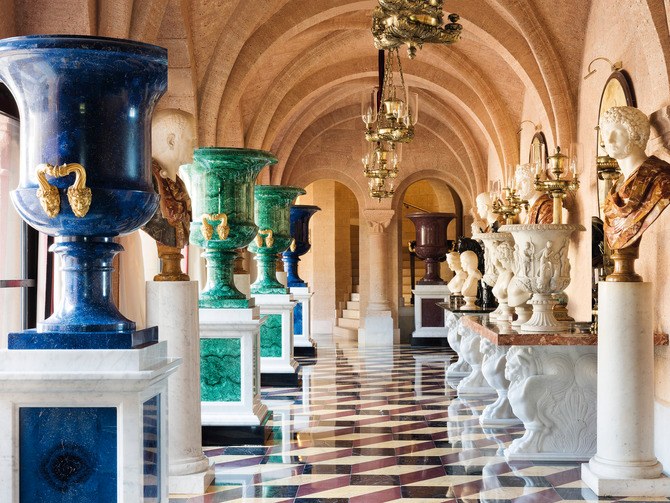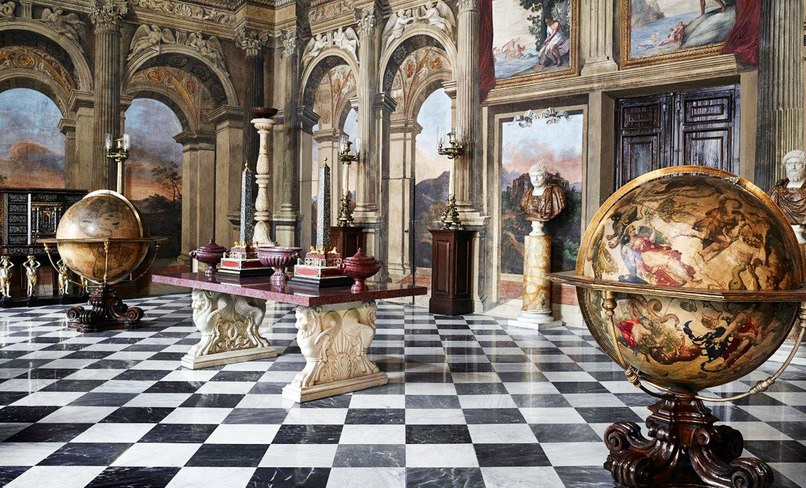Some seasons ago—like some Black Knight out of nowhere—Robert Balkany, a young and rich land developer, came to Deauville . . . and challenged Elie de Rothschild for primacy among the lords in that resort even whose mayor . . . has a title.” When Women’s Wear Daily ran this gossipy item in 1967, the dashing Romanian-born commoner—his faux-noble surname, actually Zellinger de Balkany, was his father’s invention—was stepping out with Italy’s Princess Maria Gabriella. The couple would marry, propagate, and separate, but when they divorced in 1990 Balkany lived on in princely splendor, thanks to a fortune built on shopping malls, until he died, in 2015.
From March 22 to 23, Christie’s London will auction furnishings and art from Balkany’s Côte d’Azur retreat, Château Balsan, and his piano nobile dwelling in Rome’s historic Palazzo Lancellotti. The haul is so stupendous—arguably even finer than last year’s Balkany auction at Sotheby’s Paris—that it justifies the considerable expense of shipping some 700 items from the Continent to Christie’s King Street premises.

Dramatic objects freighted with provenance were Balkany’s passion. One is a powerhouse 1824 silver-gilt centerpiece depicting Hercules knocking the stuffing out of the serpent Hydra (est. $500,000–$750,000), which belonged to George III’s son the Duke of York. Another showstopper is the monumental pair of celestial and terrestrial globes (estimate not available at press time) that graced the Venetian palace of café-society grandee Carlos de Beistegui.
Balkany’s eye for distinguished lineage extended beyond objets d’art. Château Balsan, for example, was built for Consuelo Vanderbilt, the American heiress who divorced the Duke of Marlborough to marry industrialist Jacques Balsan. Then there was Marala, a 1930s yacht known as Gaviota IV when it was owned by Arturo Lopez-Willshaw, famed for his exquisite taste in decor, objects, and entertainments.

No mean host himself, Balkany demanded boldly colored, fantastically furnished, and luxuriously upholstered interiors. He achieved them with eminences such as Henri Samuel, Federico Forquet, and the AD100’s Jacques Garcia. But unlike many clients, he provided the art and furnishings. According to Pedro Girao, a Christie’s chairman who attended lavish dinners chez Balkany, the shopping-center king was “a shopaholic who went after great, great things—and less great things, too.”
What’s less great is still fabulous by any standard, notably a pair of massive malachite urns and their lapis lazuli mates. They could easily pass as imperial Russian but were fashioned by Tosco Ticciati, the Florentine hard-stone studio that supplied the towering obelisks that punctuate Balkany’s crowning commercial achievement—Euroma2, Europe’s largest shopping mall, which opened in Rome in 2008.
Balkany was nothing if not consistent in his regal taste, which many interior decorators and collectors today will dismiss as old-fashioned. But for the younger generation— weaned on their parents’ revival of their great-grandparents’ modernism and seeking something less expected—the magnate’s deluxe chattels may come off less fustily traditional than alluringly opulent







